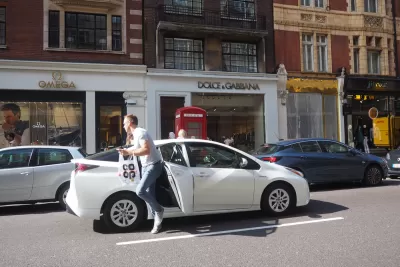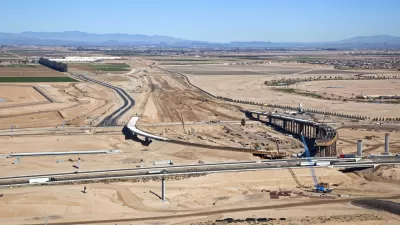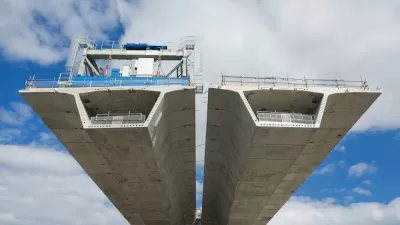The reality of ride hailing has fallen well short of the wishful thinking about reduced congestion and reduced pollution that defined the early days of Uber and Lyft.

"According to the Union of Concerned Scientists, ride-hailing trips today result in an estimated 69 percent more climate pollution on average than the trips they displace," reports Andrew J. Hawkins.
The Union of Concerned Scientists published a study on February 25 that included those findings.
At the heart of those findings is the fact that ride-hailing trips have been shown to displace trips from low-carbon modes, like public transit, biking, and walking. Hawkins says that reality also provides a path toward reduced emissions: "Uber and Lyft could reduce these emissions with a more concerted effort to electrify its fleet of vehicles or by incentivizing customers to take pooled rides, the group recommends."
As noted in the article, both Uber and Lyft have expressed a desire to limit emissions, but delivering on those expressed desires will be a tall order. Both companies have responded to the report, Uber promising to "continue to invest in products and advocate for policies that reduce car ownership, promote more pooled trips and support greater adoption of bikes, scooters, green vehicles and the use of public transit." Lyft called the study misleading.
FULL STORY: Uber and Lyft generate 70 percent more pollution than trips they displace: study

Trump Administration Could Effectively End Housing Voucher Program
Federal officials are eyeing major cuts to the Section 8 program that helps millions of low-income households pay rent.

Planetizen Federal Action Tracker
A weekly monitor of how Trump’s orders and actions are impacting planners and planning in America.

The 120 Year Old Tiny Home Villages That Sheltered San Francisco’s Earthquake Refugees
More than a century ago, San Francisco mobilized to house thousands of residents displaced by the 1906 earthquake. Could their strategy offer a model for the present?

HSR Reaches Key Settlement in Northern California City
The state’s high-speed rail authority reached an agreement with Millbrae, a key city on the train’s proposed route to San Francisco.

Washington State Legislature Passes Parking Reform Bill
A bill that would limit parking requirements for new developments is headed to the governor’s desk.

Missouri Law Would Ban Protections for Housing Voucher Users
A state law seeks to overturn source-of-income discrimination bans passed by several Missouri cities.
Urban Design for Planners 1: Software Tools
This six-course series explores essential urban design concepts using open source software and equips planners with the tools they need to participate fully in the urban design process.
Planning for Universal Design
Learn the tools for implementing Universal Design in planning regulations.
Ada County Highway District
Clanton & Associates, Inc.
Jessamine County Fiscal Court
Institute for Housing and Urban Development Studies (IHS)
City of Grandview
Harvard GSD Executive Education
Toledo-Lucas County Plan Commissions
Salt Lake City
NYU Wagner Graduate School of Public Service





























